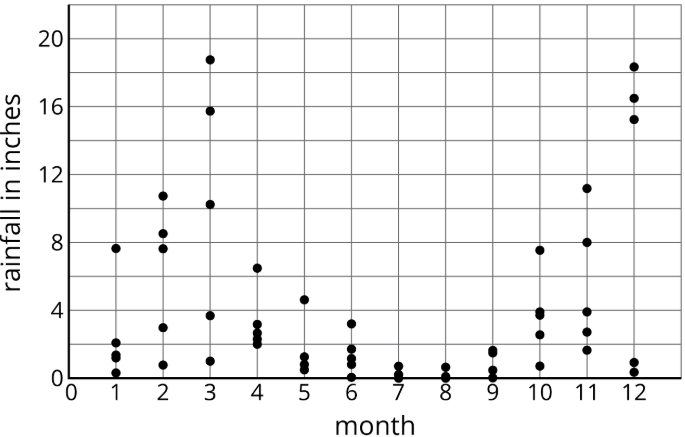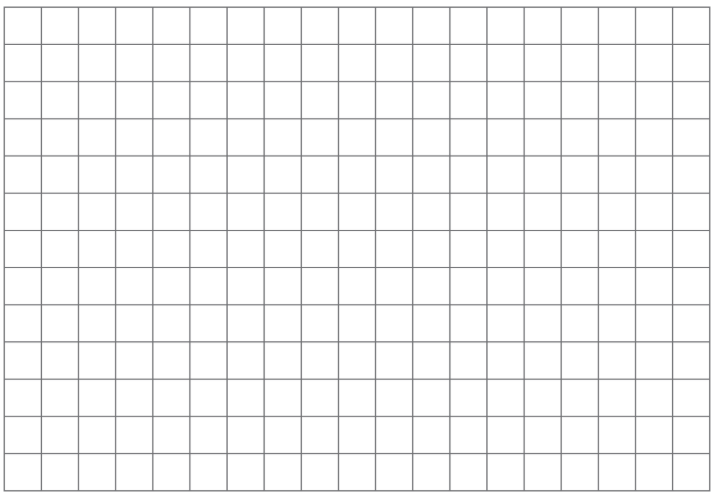9.2.2: Trazar el clima
- Page ID
- 118763
\( \newcommand{\vecs}[1]{\overset { \scriptstyle \rightharpoonup} {\mathbf{#1}} } \) \( \newcommand{\vecd}[1]{\overset{-\!-\!\rightharpoonup}{\vphantom{a}\smash {#1}}} \)\(\newcommand{\id}{\mathrm{id}}\) \( \newcommand{\Span}{\mathrm{span}}\) \( \newcommand{\kernel}{\mathrm{null}\,}\) \( \newcommand{\range}{\mathrm{range}\,}\) \( \newcommand{\RealPart}{\mathrm{Re}}\) \( \newcommand{\ImaginaryPart}{\mathrm{Im}}\) \( \newcommand{\Argument}{\mathrm{Arg}}\) \( \newcommand{\norm}[1]{\| #1 \|}\) \( \newcommand{\inner}[2]{\langle #1, #2 \rangle}\) \( \newcommand{\Span}{\mathrm{span}}\) \(\newcommand{\id}{\mathrm{id}}\) \( \newcommand{\Span}{\mathrm{span}}\) \( \newcommand{\kernel}{\mathrm{null}\,}\) \( \newcommand{\range}{\mathrm{range}\,}\) \( \newcommand{\RealPart}{\mathrm{Re}}\) \( \newcommand{\ImaginaryPart}{\mathrm{Im}}\) \( \newcommand{\Argument}{\mathrm{Arg}}\) \( \newcommand{\norm}[1]{\| #1 \|}\) \( \newcommand{\inner}[2]{\langle #1, #2 \rangle}\) \( \newcommand{\Span}{\mathrm{span}}\)\(\newcommand{\AA}{\unicode[.8,0]{x212B}}\)
Lección
Construyamos un modelo.
Ejercicio\(\PageIndex{1}\): California Rain
¿Qué notas? ¿Qué te preguntas?

Ejercicio\(\PageIndex{2}\): Data Snooping
El cuadro muestra el promedio de temperatura alta en septiembre para ciudades con diferentes latitudes. Examine los datos en la tabla.
| ciudad | latitud (grados Norte) | temperatura (grados Fahrenheit) |
|---|---|---|
| Atlanta (Georgia) | \(33.38\) | \(82\) |
| Portland (Maine) | \(43.38\) | \(69\) |
| Boston (Massachusetts) | \(42.22\) | \(73\) |
| Dallas (Texas) | \(32.51\) | \(88\) |
| Denver (Colorado) | \(39.46\) | \(77\) |
| Edmonton | \(53.34\) | \(62\) |
| Fairbanks | \(64.48\) | \(55\) |
| Juneau | \(58.22\) | \(56\) |
| Kansas City (MO) | \(39.16\) | \(78\) |
| Lincoln (NE) | \(40.51\) | \(77\) |
| Miami (Florida) | \(25.45\) | \(88\) |
| Minneapolis (Minnesota) | \(44.53\) | \(71\) |
| Nueva York, NY | \(40.38\) | \(75\) |
| Orlando (Florida) | \(28.26\) | \(90\) |
| Filadelfia, PA | \(39.53\) | \(78\) |
| San Antonio (Texas) | \(29.32\) | \(89\) |
| San Francisco (California) | \(37.37\) | \(74\) |
| Seattle (Washington) | \(47.36\) | \(69\) |
| Tampa (Florida) | \(27.57\) | \(89\) |
| Tucson (Arizona) | \(32.13\) | \(93\) |
| Yellowknife, NT | \(62.27\) | \(50\) |
- ¿Qué información contiene cada fila?
- ¿Cuál es el rango para cada variable?
- ¿Ves una asociación entre las dos variables? Si es así, describa la asociación.
Ejercicio\(\PageIndex{3}\): Temperature vs. Latitude
1. Hacer una gráfica de dispersión de los datos.

2. Describa cualquier patrón de asociación que note.
3. Dibuja una línea que se ajuste a los datos. Escribe una ecuación para esta línea.

